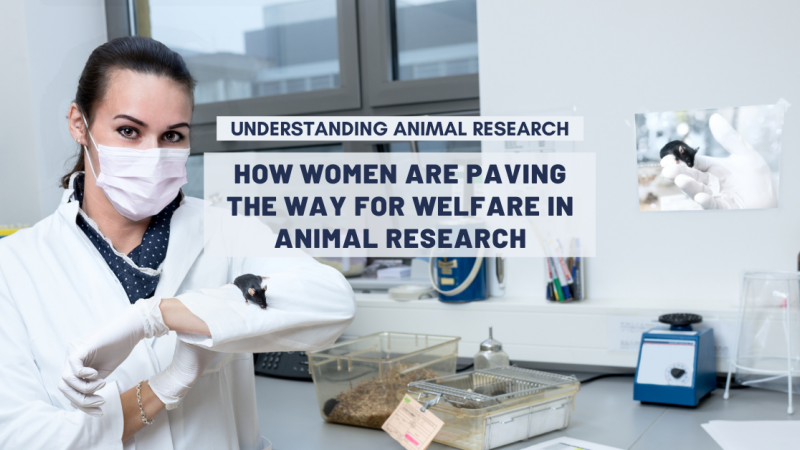
Rats and mice show increased stress levels when handled by men rather than women, potentially skewing study results.
Today, only 28% of researchers are women and only 3% of Scientific Nobel Prizes have been awarded to women. While men and women are equally represented in scientific courses, and women actively pursue bachelor’s and master’s degrees, their numbers drop abruptly at PhD level and the discrepancy widens as their research careers develop. The high proportion of women in education doesn’t necessarily translate into a greater presence in research. Each step up the ladder of the scientific research system sees a drop in female participation until, at the highest echelons of scientific research and decision-making, there are very few women left. While the scientific excellence and their contribution to science cannot be subject to any doubt any more, women still do not advance in their careers in the same speed as their male counterparts.
It’s hard to be surprised that sexism is a problem in our society after the appearances of recent movements like the #MeToo stories. Women in science groups have been drawing attention to sexism and the underrepresentation of women since the 1970s. But science can have particularly archaic views on the matter. Without citing particular examples, the Nobel laureate and English biochemist Tim Hunt, rocked the scientific world when he announced in 2015 being in favour of single-sex labs, adding that he didn’t want to “stand in the way of women”, and saying “Let me tell you about my trouble with girls … three things happen when they are in the lab … You fall in love with them, they fall in love with you and when you criticise them, they cry.”
It’s hard to be shocked at the boorish behaviour of men from scientific fields if you’ve ever investigated the lives of scientific “greats” who won Nobel Prizes even as they pushed aside, harassed and mocked their female colleagues. Watson and Crick’s discovery of the DNA structure wouldn’t have been possible without Rosalind Franklin’s work, but she was robbed of recognition throughout her career. And she is only one in a million. Over the centuries, female researchers have had to work as "volunteer" faculty members, seen credit for significant discoveries they've made assigned to male colleagues, and been written out of textbooks.
While it is hard to shake the stereotype of the white male researcher, movements are growing to give more place to women in the field. And although there are multiple reasons to engage in that direction, science also has the marvel of proving factually why female representation is so important. Indeed, studies have shown that experimenter gender can affect a variety of psychological and physiological variables. A particular study has shown that gender can inherently affect experimental work, the consistency of study results, and play a significant role in the well-being of laboratory animals.
For years, anecdotal reports had suggested that rodents show a diminished pain response when a handler remains in the room. Jeffrey Mogil, a pain researcher at McGill University in Montreal and his team looked into this and measured the response of mice and rats to an injection in the ankle, either in the presence of different experimenters or while alone in an empty room (the experimenters gave the injection and then quickly left). To their surprise, the pain response in the animals, based on pain levels analysed using the mouse grimace scale, seemed to decrease by about 40% when a man – or only his scent – rather than a woman remained in the room. Women experimenters did not alter the animals’ pain response — in fact, a female presence seemed to counteract the response to men.
When the authors dug further, they discovered that the male scent wasn’t acting on pain pathways, as an analgesic does. Instead, the animals showed elevated blood levels of the stress hormone corticosterone. Male handlers' stimuli induced a robust physiological stress response that resulted in stress-induced analgesia. The stress, in effect, temporarily quashed the pain response. And it wasn’t just male humans who caused the stress in the rodents, but any nearby male animal, including guinea pigs, rats, cats and dogs. Male cage-mates of the animal being tested were the only exception. And the same results could be replicated in other experimental assays, such as the open field test, which measures anxiety rather than pain. Each time, the olfactory exposure to male stimuli is stressful to mice.
Now let’s not rush to conclusions. Men shouldn’t be hushed out of the labs and barred from experimental settings for causing excessive stress to the animals. However, the findings should prompt researchers to report and control for experimenter gender in their publications, as well as changes in experimenters mid-stream, to include their gender as a variable in the analysis since this factor appears to affect the physiological data. This study and others are helping increase the awareness for experimenter gender considerations in the lab. Gender equality will not only encourage female presence in science but also expand the scope of research. A win-win situation.
REFERENCES:
https://www.nature.com/articles/nmeth.2935
https://en.unesco.org/USR-contents
https://www.sciencemag.org/careers/2016/05/we-need-do-more-women-science
https://www.nature.com/news/male-researchers-stress-out-rodents-1.15106
https://www.labome.com/method/Mice-and-Rats-Housing-Temperature-and-Handling.html
Last edited: 6 February 2023 16:33



